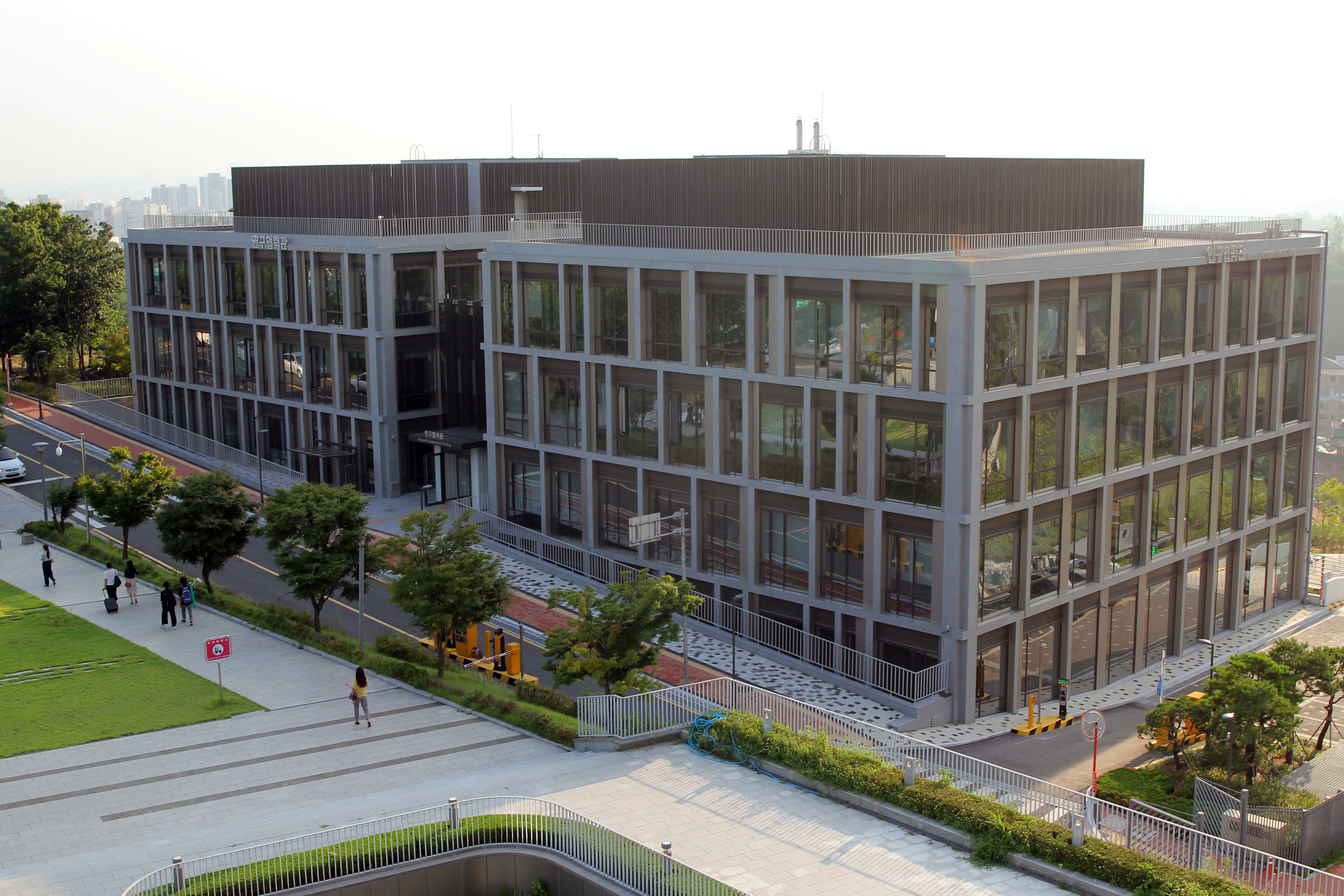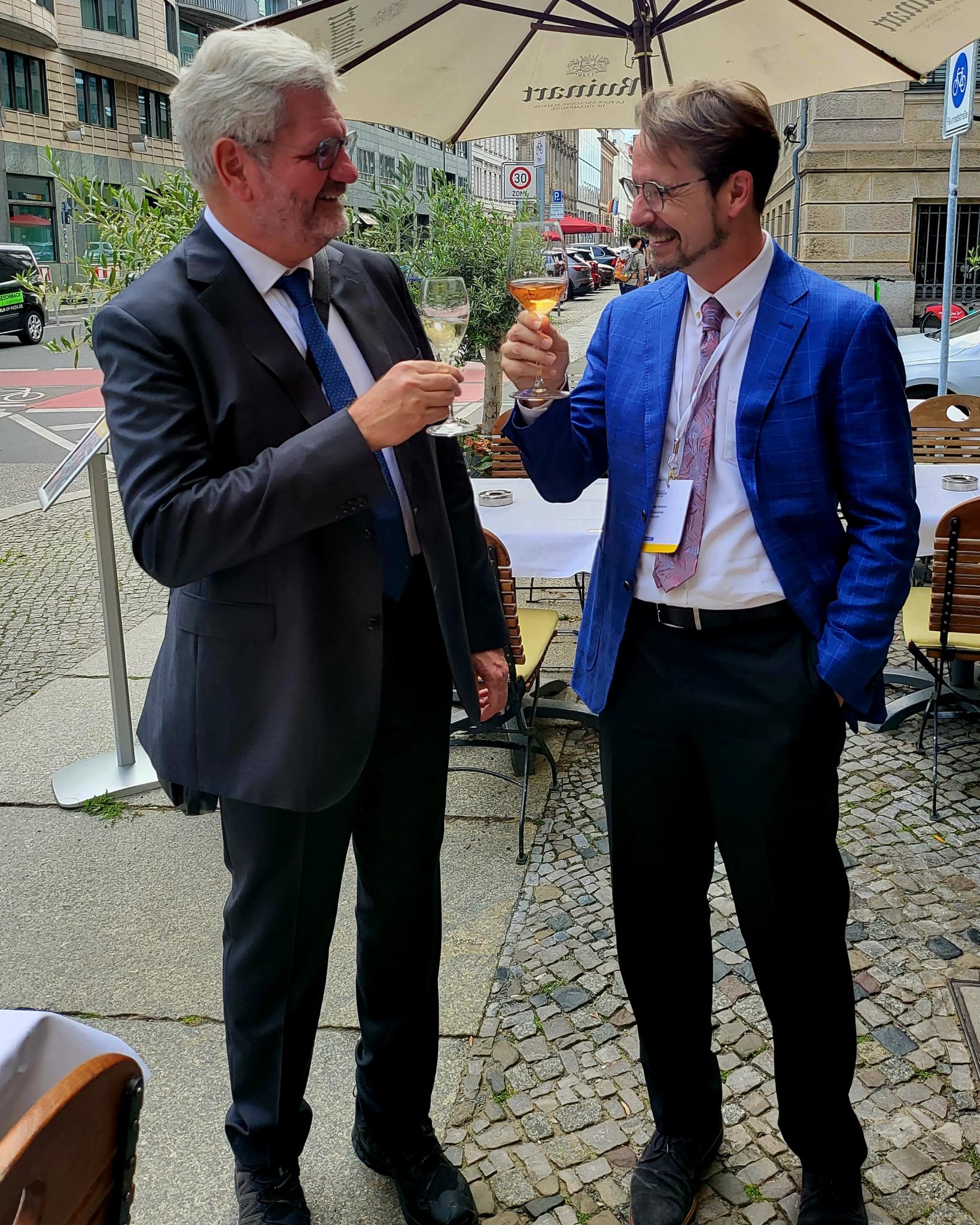1. Overview
Andreas J. Heinrich is a distinguished physicist renowned for his pioneering contributions to nanoscience and quantum technology, particularly through his work with scanning tunneling microscopy (STM), spin excitation spectroscopy, and precise atom manipulation. His career spans significant tenures at IBM Almaden Research Center and his current leadership role in South Korea, where he directs the Institute for Basic Science (IBS) Center for Quantum Nanoscience. Heinrich's groundbreaking achievements include developing advanced STM techniques, creating the world's smallest stop-motion film by manipulating individual atoms, and pushing the boundaries of data storage to the single-atom level. His research also extends to controlling quantum states of molecules and atoms, leading to innovations like MRI of single atoms. His work has significantly advanced the scientific foundations of quantum-coherent systems at the nanoscale, contributing to the development of high-sensitivity quantum sensors and future quantum computing.
2. Early Life and Education
Andreas J. Heinrich's academic journey began in Germany, where he completed his foundational studies in physics before moving to the United States for his postdoctoral research, a period crucial for his early scientific development.
2.1. Studies in Germany
Heinrich pursued his higher education in physics at the University of Göttingen in Germany, where he earned both his Masters (DiplomdiplomaGerman) and PhD degrees in 1994 and 1998, respectively. During his doctoral studies from 1994 to 1998, he served as a research assistant under the supervision of R. G. Ulbrich.
2.2. Postdoctoral Research at IBM Almaden
Following the completion of his PhD, Heinrich moved to the United States to undertake postdoctoral research at the IBM Almaden Research Center. From 1998 until 2001, he worked under the mentorship of Kavli Prize laureate Don Eigler, a period that laid the groundwork for his subsequent career in cutting-edge research. In 2001, he was formally hired by IBM as a researcher and engineer.
3. Career
Andreas J. Heinrich's professional career is marked by his extensive tenure at IBM Research and his subsequent pivotal role in establishing and leading advanced scientific research in South Korea.
3.1. IBM Almaden Research Center
Heinrich spent 18 years at the IBM Almaden Research Center, a period characterized by significant technological advancements and leadership roles. Driven by a desire to leave Göttingen and work at IBM Almaden, he secured a scholarship from the Alexander von Humboldt Foundation to facilitate his move to the United States. His departure was notably categorized by the German magazine Stern as part of Germany's "brain drain" phenomenon, highlighting the loss of top scientific talent to other countries.
After several years as a researcher, Heinrich was promoted to group leader in 2005, overseeing research on magnetic nanostructures on surfaces and scanning probe microscopy (SPM). He held this position until 2016, during which he spearheaded numerous innovative projects that advanced the field of nanoscience.
3.2. Move to South Korea
In 2016, Andreas J. Heinrich transitioned to South Korea, taking on significant leadership positions within the country's burgeoning advanced scientific research sector.
3.2.1. Distinguished Professor at Ewha Womans University
Upon his arrival in South Korea, Heinrich was appointed as a distinguished professor at Ewha Womans University in Seoul. In this academic role, he contributes to the university's research and educational excellence, particularly in the fields of physics and nanoscience.
3.2.2. Director of IBS Center for Quantum Nanoscience
Concurrently with his professorship, Heinrich became the founding director of the Institute for Basic Science (IBS) Center for Quantum Nanoscience (QNS), located on the Ewha Womans University campus. The establishment of this center marked a significant milestone in South Korea's scientific endeavors. The groundbreaking ceremony for the QNS Research Cooperation Building took place in 2018, and the facility officially opened in 2019 during the IBS Conference on Quantum Nanoscience. The QNS building is notable for featuring some of the lowest vibration levels globally for STM laboratories, providing an optimal environment for highly sensitive experiments. The center's long-term objective is to achieve full control over the quantum states of molecules and atoms on clean surfaces and near interfaces, a goal that would enable the development of high-sensitivity quantum sensors. The QNS is dedicated to engineering the quantum future by investigating the scientific foundations of quantum-coherent systems at the nanoscale, with a particular focus on spins on surfaces.

4. Major Research and Achievements
Andreas J. Heinrich's research has consistently pushed the boundaries of physics and nanotechnology, particularly through his innovations in scanning tunneling microscopy, atom manipulation, and quantum nanoscience.
4.1. Scanning Tunneling Microscopy (STM) Innovations
Heinrich has made pioneering advancements in developing sophisticated STM techniques. He developed nanosecond scanning tunneling microscopy, which dramatically improved time resolution by 100,000 times. His work also involved combining X-ray absorption spectroscopy with spin excitation spectroscopy. In 2015, his team achieved a significant breakthrough by combining STM with electron spin resonance (ESR), enabling single-atom measurements on spins with nano-electronvolt precision. This innovative ESR-STM technique was further extended to individual molecules in 2022, demonstrating its versatility and potential for broader applications.
4.2. Atom Manipulation and Data Storage
A core area of Heinrich's research involves the precise manipulation of individual atoms, exploring their potential for data storage and computing, thereby pushing the limits of miniaturization.
4.2.1. 'A Boy and His Atom'
Heinrich was a principal investigator behind A Boy and His Atom, a short stop-motion animation film created by meticulously moving thousands of individual atoms. This groundbreaking project, recognized by the Guinness Book of World Records as the world's smallest stop-motion film, showcased the remarkable precision achievable in atom manipulation and captured public imagination about the possibilities of nanotechnology.
4.2.2. Single-Atom Memory
Heinrich's team conducted seminal research on reducing data storage requirements. Their initial findings demonstrated that data storage could be achieved with as few as twelve atoms, a significant reduction from the standard of one million atoms used in existing technologies. Less than five years later, the team, led by Heinrich, further miniaturized this capability, successfully reducing the requirement to a single atom for information storage. The Ministry of Science and ICT in South Korea recognized this achievement as one of the most substantial domestic research outcomes of that year.
4.3. Quantum Nanoscience and Advanced Measurement
Heinrich's work in quantum nanoscience focuses on controlling the quantum states of molecules and atoms, alongside developing advanced measurement techniques. A long-term goal for the Center for Quantum Nanoscience is to fully control the quantum states of molecules and atoms on clean surfaces and near interfaces, which would enable the use of high-sensitivity quantum sensors. In collaboration with IBM Almaden, his team achieved a remarkable feat by performing MRI scans on individual atoms, a breakthrough that opens new avenues for understanding and manipulating matter at its most fundamental level.
5. Academic and Professional Standing
Andreas J. Heinrich is widely recognized within the scientific community, holding fellowships in prestigious organizations and serving in influential advisory capacities.
5.1. Fellowships and Memberships
Heinrich is a distinguished fellow of the American Physical Society (APS), an honor he received in 2012 for his significant contributions to the development of spin excitation spectroscopy and nanosecond STM. He is also a fellow of the American Association for the Advancement of Science (AAAS), further underscoring his standing in the broader scientific community. In 2016, he was awarded a Distinguished Fellowship from the Chinese Academy of Sciences President's International Fellowship Initiative (PIFI).
5.2. Advisory and Committee Roles
Since 2012, Heinrich has been a member of the Scientific Advisory Board of the Max Planck Institute for Solid State Research in Stuttgart, Germany. His involvement in such advisory roles highlights his influence and expertise in guiding scientific research and policy at leading international institutions.
6. Awards and Honors
Andreas J. Heinrich has received numerous awards and honors throughout his career, recognizing his groundbreaking scientific contributions and leadership in the field of nanoscience and quantum physics.

- 2024: Honorary citizen of Seoul
- 2023: Humboldt Research Award
- 2021: Karl Friedrich Bonhoeffer Lecture Award
- 2020: Heinrich Rohrer Medal (Grand Medal) of the Japan Society of Vacuum and Surface Science
- 2018: Outstanding National R&D Performances, awarded by the Ministry of Science and ICT of South Korea
- 2018: Foresight Institute Feynman Prize in Nanotechnology, for advances in manipulating atoms and small molecules on surfaces and employing them for data storage and computation
- 2018: Joseph F. Keithley Award For Advances in Measurement Science, for the design and construction of highly sophisticated scanning probe instruments, including the development of inelastic electron tunneling spectroscopy at the single atom and single spin limit
- 2016: Distinguished Fellowship from the Chinese Academy of Sciences President's International Fellowship Initiative (PIFI)
- 2014: Outstanding Technical Achievement Award, IBM
- 2012: Fellow of the American Physical Society
- 2011: Best of IBM Award
- 2011: Corporate Award, IBM
- 2010: Outstanding Technical Achievement Award, IBM
- 2007: Outstanding Innovation Award, IBM
- 2003: Research Division Award, IBM
- 1998: Feodor Lynen scholarship, Alexander von Humboldt Foundation, Germany